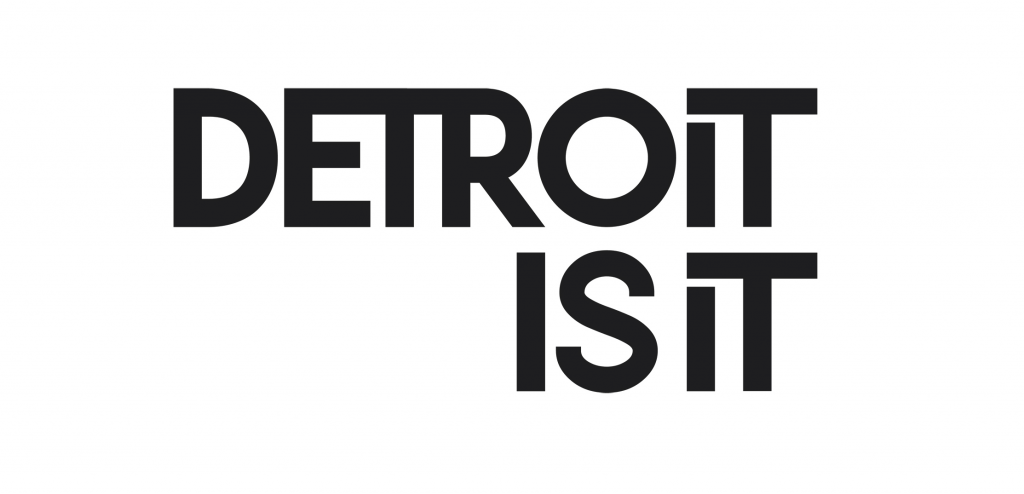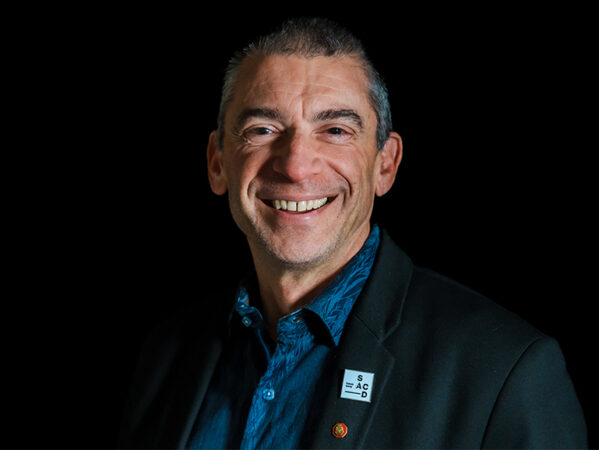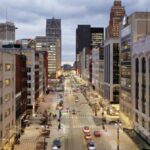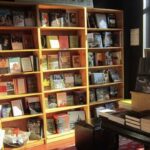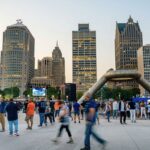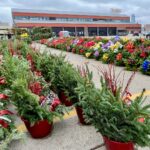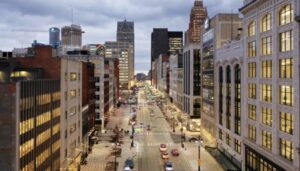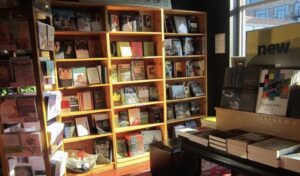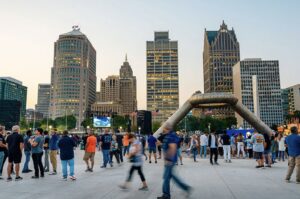Dan Pitera has long been known as a pioneer in Detroit’s architecture and design space. As dean of the University of Detroit Mercy’s School of Architecture & Community Development, he has helped shape a generation of students who see design not just as form-making, but as a tool for equity, resilience, and community building.
Under his leadership, the school has deepened its commitment to projects that engage directly with Detroit neighborhoods — teaching students to work with communities rather than treat them as a laboratory. That philosophy is reflected in the Student Sustainability Studio Showcase kicking off at Sustainable Urban Design Summit 2025, where students and educators collaborate across disciplines and institutions to design solutions for real-world challenges.
This year, the University of Detroit Mercy is also a sponsor of the Sustainable Urban Design Summit (SUDS), underscoring its leadership in shaping the next wave of sustainable, community-driven design. Pitera spoke with Detroitisit about collaboration, community partnerships, and the role of universities in Detroit’s evolving future.
REGISTER FOR SUSTAINABLE URBAN DESIGN SUMMIT 2025 , NOV, 6 AT NEWLAB DETROIT HERE.
Detroitisit: The Student Sustainability Studio Showcase brings together emerging designers to tackle real-world challenges. What do you see as the most valuable learning outcome for students who participate?
Pitera: One of the strongest takeaways for students is the collaboration across schools. Working alongside peers from institutions like CCS is unusual, and that experience expands their perspective. They begin to see how design connects across disciplines and how other approaches inform their own work.
Another important outcome is the public dimension. Our students are required to complete co-ops and are used to engaging in projects outside the academic environment. But many aren’t used to having their work displayed, discussed, and critiqued in such a visible way. Seeing public reactions — from community members, professionals, and peers — helps them understand impact in a deeper way.
Detroitisit: How do you strike the balance between theory and practice in the studio?
Pitera: Every studio finds its own balance, and that’s the beauty of architecture. Some lean toward practice, others toward theory, but the discipline demands that both coexist.
It’s one of the most difficult things for people outside the arts to grasp. In a science lab, you cannot point to a scientist in a lab coat, a test tube, and say: That’s science. It is clear that science is a body of knowledge. Not a thing that you can point to. In architecture, you can point to a building and say: That’s architecture. Thus, architecture is both a physical thing and a body of knowledge. It’s not “either/or,” it’s “and.”
For us, the balance means teaching students to simultaneously see architecture as a physical thing and as a body of knowledge. They must learn to create the thing while also contributing to the larger discourse of the discipline.
Detroitisit: You’ve long emphasized local impact. What does meaningful community partnership look like in practice?
Pitera: Reaching meaningful community impact is incredibly difficult in an academic environment, but it’s essential. For partnerships to matter, they must be ongoing relationships — not defined by semesters or project deadlines.
The key is clarity at the beginning. We sit down with community members and explain what the semester will look like: when students will be present, how engagement will happen, and what kind of project will be produced at the end. Without that clarity, expectations can become mismatched — some community members may expect construction, when the reality is conceptual design.
When communities understand the process upfront, every semester can produce meaningful partnership. It’s about aligning expectations so the collaboration is transparent, respectful, and productive.
Detroitisit: Detroit is often described as a city of resilience and reinvention. How do your students engage with that context?
Pitera: We remind our students constantly: Detroit is our home, not our laboratory. We don’t do work to the community or even for the community — we do it with the community.
Residents bring expertise just as faculty and students do. When those forms of knowledge are shared, more thoughtful and relevant responses emerge. That’s why we emphasize inclusivity, and why we’re careful not to be extractive.
By working directly with community members, students not only contribute ideas but also learn the history, culture, and expertise embedded in that place. That synthesis creates projects that live in direct connection with Detroit’s story.
Detroitisit: What sets Detroit Mercy graduates apart in their readiness for today’s design and sustainability challenges?
Pitera: We prepare our students not just for today, but for the future of a rapidly changing discipline. If we train them only for the present, they’ll be obsolete in two or three years. Instead, we emphasize adaptability — the ability to see what’s around them, to synthesize, and to lead into what comes next.
Our graduates understand that sustainable urban environments mean nothing without people. They must think simultaneously about physical systems, ecology, and equity. We teach them to see these as linked, not separate — because thriving communities demand all three.
Detroitisit: Architecture is often seen as a profession of problem-solvers. You’ve called architects generators of new ideas. What do you mean?
Pitera: Problem-solving is important, but it can also become transactional: one problem, one solution, and then on to the next. That limits us.
I believe architects are more than problem-solvers. We are synthesizers — people who connect the dots between things others miss or dismiss. By doing so, we transform possibilities rather than simply respond to problems.
And it’s never solitary work. When you include the community, when you work collaboratively, the synthesis becomes richer. That’s where transformative thinking happens.
Detroitisit: With the Kresge Foundation’s move and other major Detroit initiatives underway, what role should universities play in shaping the city’s future?
Pitera: Universities must ensure that today’s investments allow long-term residents to thrive and stay. Too often, development displaces the very people who created the culture that made a place desirable.
We’ve been working closely with Kresge on its relocation, and I’m encouraged by their approach. They are asking the right questions: How do we ensure property tax relief, home repair support, and other resources so current residents can remain in place? How do we create investment without erasing community?
That’s where universities come in. We can help shape policy, train future leaders, and act as bridges between institutions and neighborhoods. Our role is to ensure the city’s future is built with — not at the expense of — the people who call it home.
As always, be sure to subscribe to our newsletter for regular updates on all things Detroit.
